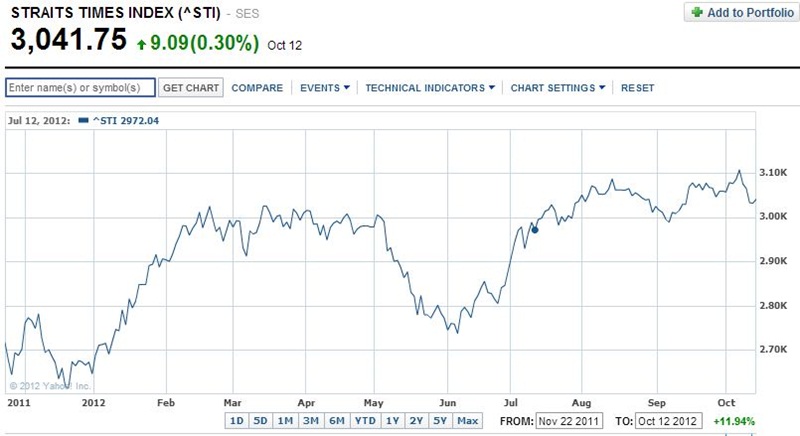It’s been a full month, but as 2012 comes to a close, a
quick look through my portfolio seems to be in order.

Last accessed 23 Dec 2012, the portfolio’s return from Oct 2011 stands at 4.84%. Everything seems ok, with exception of BNPPL1 Opportunities USA USD, which has yet to recover from its performance in 2011 and 2010.
To illustrate how badly the fund has done, Citywire
ranks François Mouté (manager for the fund) at
bottom of North American ranking tables over 12 months, and 36 months.
 |
| source: Citywire.com |
Each time my eyes glance past those
numbers, my mind starts coming up with questions like:
“Has he lost his mojo?”
“Is he more interested in retirement than
returns?”
“Is Moute french for Miller?”
It’s a risk all active funds face. The chance
that a star manager, for whatever reason – be it personal challenges (i.e. life
happens), or professional challenges (i.e. the ceaseless grind of the performance
derby on one’s soul) – decides it’s time to cash in the chips and live off bank
interest. I claim no expertise in judging the psychology of fund managers. I’ll
take a look at the numbers, and decide what to do from there.
New additions: I picked up Amundi Gbl Luxury
& Lifestyle SGD, for lack of a better global equity fund. I would love to see
something better catch my eye. Funds on the radar include Aberdeen Gbl
Opportunities or DWS Invest Top Dividend.
Meanwhile, I wrote previously about agonizing
over the decision to switch out of Legg Mason WA SEA Special Situations.
Happily, or from sheer luck, both funds performed pretty much identically since
roughly end-Sep 2012:
 |
Source: Fundsupermart.com |
Both funds returned around 8% in 3 months,
and short of any potential slowdown, I’ll stick with Legg Mason since
historically it has done well in rising markets.
A bet on HK via Aberdeen China has finally paid off, netting about 6% returns, and I might hold that for some time more.
The fixed income segment of the portfolio looks healthy, and
thankfully so, since it’s propping up my portfolio against the returns from BNPPL1
Opportunities USA USD. I’m not about to change anything on this area of the portfolio.
Real estate, via Henderson Global Property is another strong
performer, returning 10% since it appeared in the portfolio.
While I’m more or less satisfied with Threadneedle Enhanced
Commodities, it is pretty volatile, and I’m keeping an eye on DB Platinum Commodity RIC-C SGD Hedged if the former
continues to track the latter.











